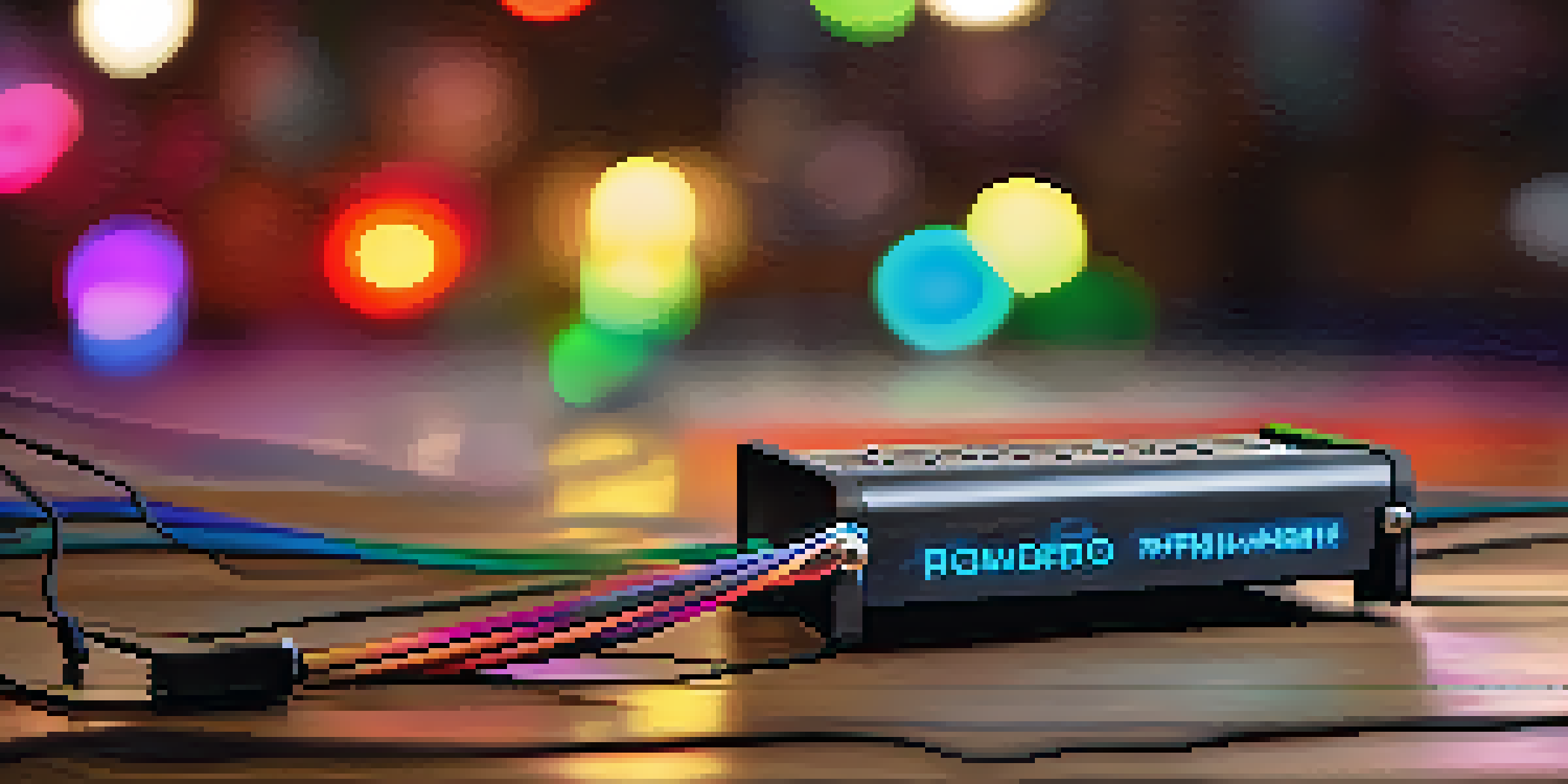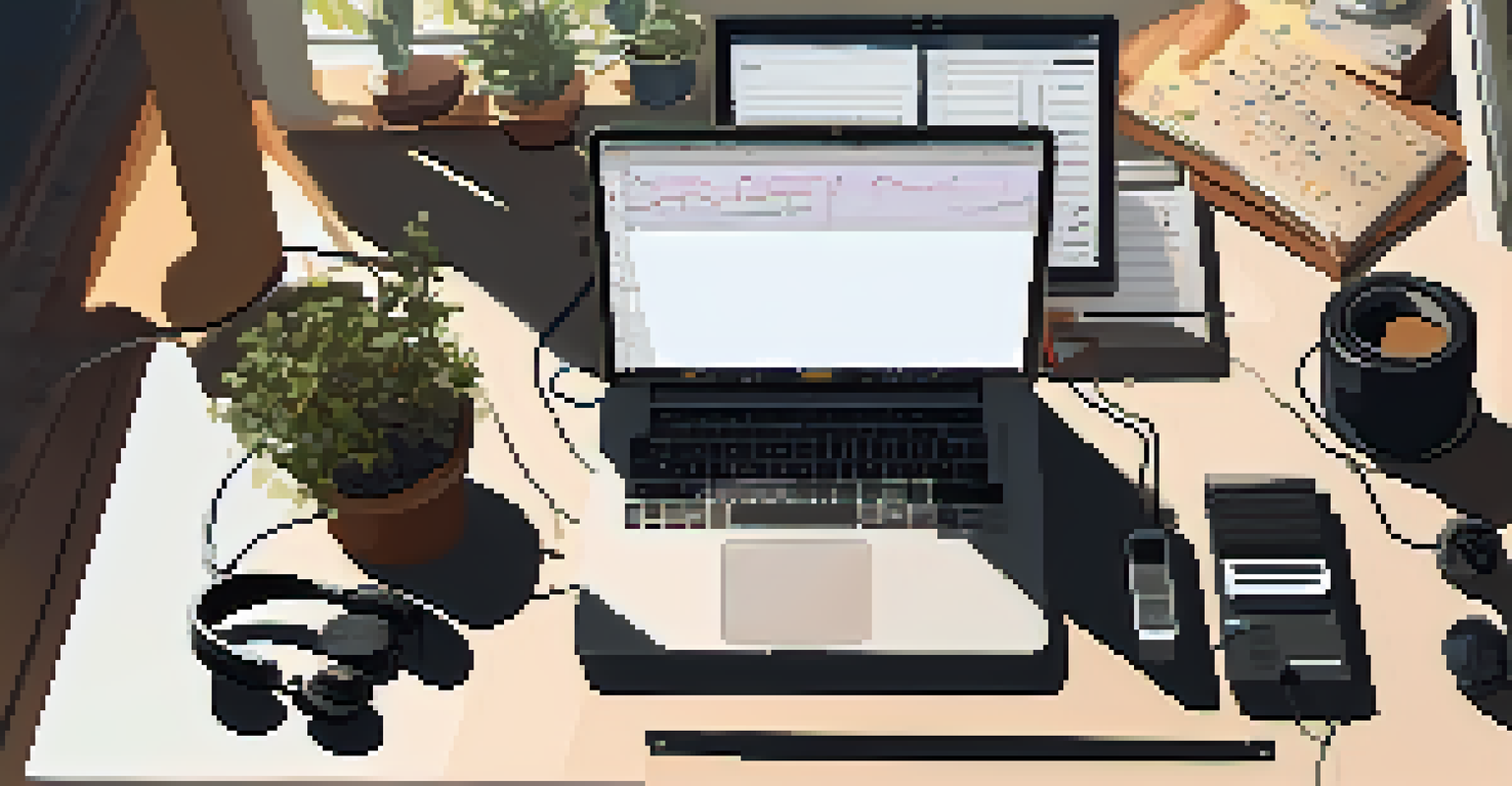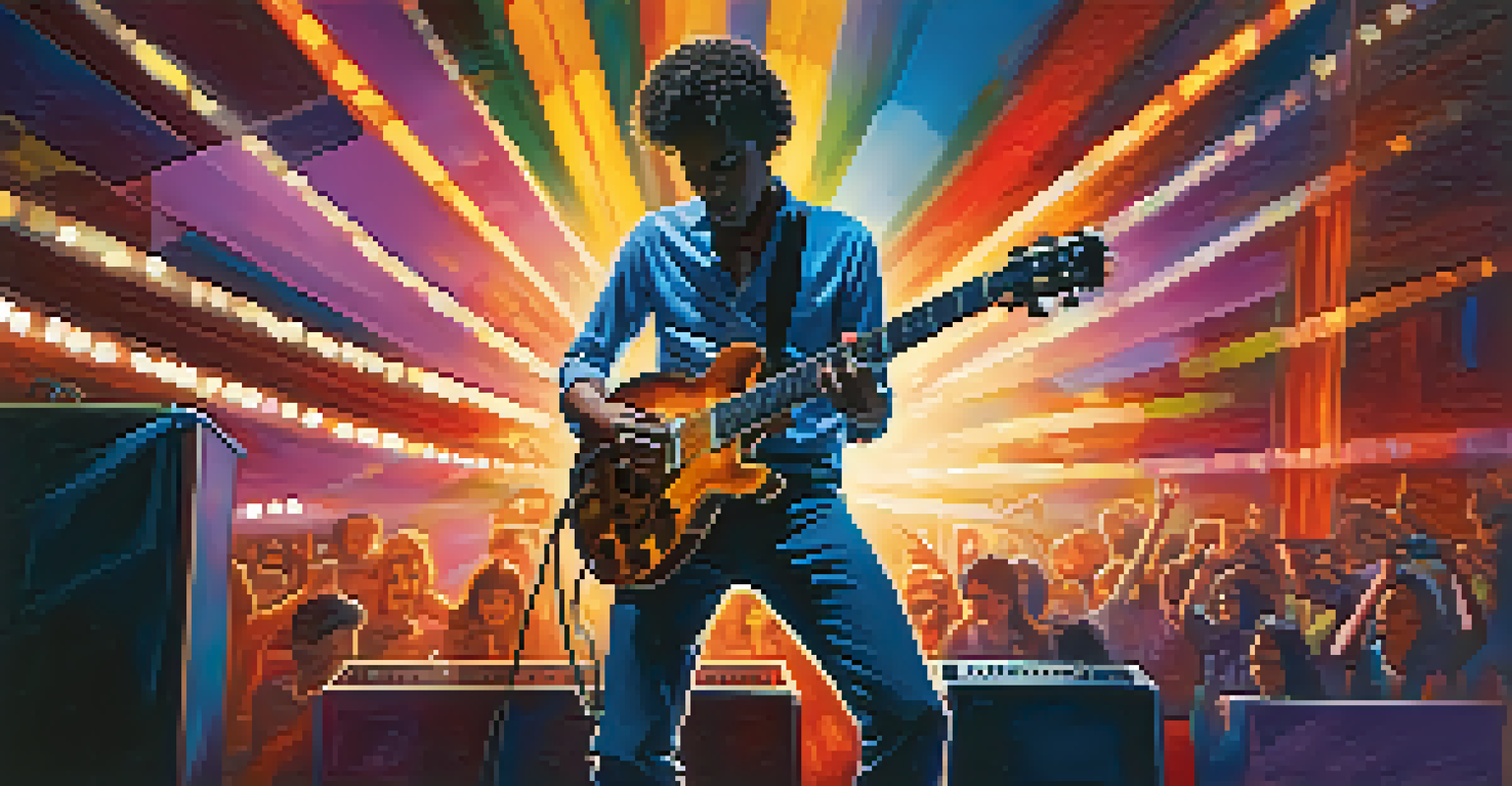Creating Unique Guitar Sounds with Loop Pedals

Understanding Loop Pedals and Their Functionality
Loop pedals are powerful tools that allow guitarists to record and layer sounds in real-time. They function by capturing a segment of your playing and repeating it, creating a loop that you can play over. This enables musicians to build complex soundscapes, making a solo performance feel like a full band experience.
Music is the shorthand of emotion.
The basic operation of a loop pedal involves a simple footswitch that starts and stops the recording. Once you’ve recorded a loop, you can add additional layers on top, such as rhythm parts or melodies, making it incredibly versatile for live performances or songwriting. It's like having your very own personal backing band at your feet!
As you dive into the world of loop pedals, you'll discover various models with different features. Some offer multiple tracks, while others have built-in effects. Understanding these functions will help you choose the right pedal for your sound creation needs.
Choosing the Right Loop Pedal for Your Style
With countless loop pedals on the market, selecting the right one can feel overwhelming. Start by considering your musical style—some pedals cater to specific genres better than others. For instance, if you’re into ambient music, you might prefer a pedal that allows extensive layering and effects.

Additionally, think about your performance needs. If you play solo gigs, a pedal with multiple tracks can help you create intricate arrangements on the fly. For those who enjoy experimenting, look for pedals that offer built-in effects like reverb or delay to enhance your loops further.
Choosing the Right Loop Pedal
Select a loop pedal that aligns with your musical style and performance needs for optimal creativity.
Don't forget to try out different pedals in-store or watch online demos. This hands-on approach will help you find a pedal that feels intuitive to use, making it easier to unleash your creativity when it matters most.
Basic Looping Techniques for Beginners
Once you have your loop pedal, it's time to get familiar with some basic looping techniques. Start with simple one-measure loops; record a chord progression or a catchy riff, then layer additional sounds on top. This foundational exercise will help you understand timing and how to build complexity without feeling overwhelmed.
The beautiful thing about learning is that no one can take it away from you.
A great way to practice is to set a metronome or use a drum track to keep your timing consistent. As you get more comfortable, try varying your playing style—experiment with strumming patterns, fingerpicking, or even percussive tapping. This will add texture to your loops and keep them engaging.
Remember, the key to successful looping is to listen carefully to your layers as you build them. Make adjustments when necessary, ensuring each element complements the others for a rich, cohesive sound.
Advanced Looping Techniques for Experienced Players
Once you've mastered the basics, it’s time to explore advanced looping techniques. One popular approach is using rhythmic loops that create a percussive foundation for your melodies. By tapping on your guitar body or using a percussive instrument, you can add a dynamic element to your performance that keeps the energy flowing.
Another technique is to incorporate live sampling. This involves capturing sounds from your environment or other instruments and looping them. Imagine looping the sound of a clapping audience or the hum of a coffee shop—this adds an exciting layer of spontaneity and texture to your music.
Master Basic Looping Techniques
Start with simple one-measure loops to build your confidence and understanding of layering in your music.
Don’t hesitate to explore unconventional methods, like using multiple pedals in tandem. This allows for complex layering and unique sound manipulation, giving you endless creative possibilities for your music.
Incorporating Effects into Your Looping Setup
Adding effects to your loop pedal setup can elevate your sound to new heights. Common effects include delay, reverb, and distortion, each adding a different texture to your loops. For instance, a touch of reverb can create a spacious atmosphere, while distortion can add grit and energy, perfect for rock or grunge styles.
Experimenting with the order of your effects can also yield fascinating results. Placing a delay pedal before your loop pedal can create echoing layers, while putting it after can add depth to your loops. This trial-and-error process can lead to discovering your unique signature sound.
Remember to keep your effects subtle at first. As you become more comfortable, you can start to push boundaries and see how far you can take your sound. The goal is to enhance your loops without overwhelming the original melody or rhythm.
Recording and Sharing Your Loop Creations
Once you've created some unique sounds, you might want to share your music with the world. Recording your loops is a straightforward process, especially with digital audio workstations (DAWs) that allow you to capture and edit your performances. This also gives you the freedom to experiment with mixing and mastering your tracks for a polished final product.
Consider setting up a dedicated space for recording. A quiet environment with good acoustics will ensure your loops sound their best. Invest in quality microphones and audio interfaces to capture the nuances of your performance, making your recordings professional and engaging.
Incorporate Effects for Depth
Adding effects like reverb and delay can enhance your loops, creating a unique sound that stands out.
Don’t forget about social media! Platforms like Instagram and TikTok are great for sharing short clips of your loop creations. Engaging with the online music community can open doors for collaboration and feedback, helping you grow as an artist.
Finding Inspiration for Your Looping Journey
Inspiration can sometimes be elusive, but numerous sources can spark your creativity in looping. Listening to your favorite artists who use loop pedals can provide ideas for techniques and styles to explore. Analyzing their structure and layering can give you insight into how to craft your own unique sound.
You can also look for inspiration outside of music. Art, nature, and even conversations can evoke emotions that translate into your guitar playing. Try capturing these feelings through your loops, experimenting with different melodies and rhythms to express them.

Joining online communities or local jam sessions can also be beneficial. Engaging with other musicians allows for the exchange of ideas, techniques, and inspiration that can enhance your looping journey. Remember, the more you share and collaborate, the more your creativity will flourish.